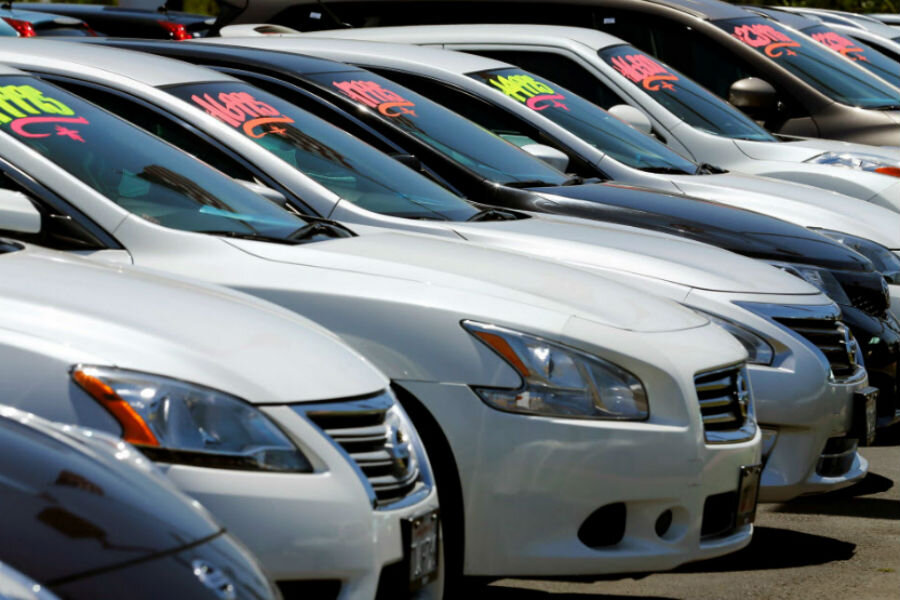Used car leasing hits the sweet spot
Loading...
Leasing a used car may be one of the best-kept car-shopping secrets. Yes, we said used-car leasing. Not many people know this option exists — but that might be changing. And here’s why: It can save you a ton of money.
“It works much like new-car leasing, except your buy-in cost and monthly payments are lower,” says Scot Hall, executive vice president of operations for Swapalease, a service that matches leaseholders who want to get out of an existing contract with car shoppers looking to take over a short-term lease.
Although used-car leasing has flown below the radar, a recent Swapalease survey found that most car shoppers would consider leasing a used car, while most dealers think used-car leasing would help them move more inventory.
Lower payments, better car
Used-car leasing offers consumers the chance to drive a still-dependable car at a reduced cost. Hall estimates that a 3-year-old BMW 3 Series would be priced at $250 to $275 on a three-year lease; new, the same car originally leased at $400 a month.
What makes used-car leasing so attractive is that it’s the best of both worlds: The lease is based on a lower purchase price, and it avoids the steep new-car depreciation curve. After that first big drop in value, the depreciation curve flattens out, which helps lower the monthly lease payment on a used car.
Hall used these two scenarios to illustrate his point:
New-car leasing: A $30,000 new car is leased for three years. During that time, it loses about half of its value, or $15,000. When you lease that car, you are mainly paying for that $15,000 depreciation (divided into monthly payments with taxes and fees).
Used-car leasing: Cut to the same car, but three years later. It is now 3 years old and worth $15,000. If you leased that car for three years, it would depreciate by only 20%, or $3,000. That depreciation would be the basis of your lease payment.
But wait, there are still other cost-saving advantages:
- Interest rates on a lease contract will apply to a smaller balance and result in lower overall interest costs.
- Used-car finance rates are dropping, with some banks offering as low as 1.9%.
- Insurance premiums on a used lease car will also be lower because the car’s value is a lot less.
- As with new-car leasing, the payments are tax-deductible if the vehicle is used for business.
- Because the purchase price of used cars is so much lower, you can step up in class to a more luxurious — although older — vehicle.
Is there a downside?
Besides losing the new-car smell, there are some things a person leasing a used car should be aware of:
Included warranty: In Swapalease’s survey, 95% of consumers said they would expect a warranty to be included when leasing a used car. If you choose to lease a certified preowned (CPO) car, that isn’t a problem since the warranty is part of the deal. But Hall said any used car could be considered as a candidate for leasing. Just negotiate a good sale price for the used car, then buy an extended warranty. It adds an extra step to the deal-making, but it could wind up saving you money over choosing a CPO car.
Maintenance and repairs: If you lease a used car from the third to the sixth year, you will drive it from 36,000 to 72,000 miles. Hall says the scheduled maintenance requirements aren’t much more demanding than those of a new car. And, if it is under an extended warranty, repairs will be covered. Pro tip: Shop for a used car with a new set of tires — you might make it through the lease without having to buy new rubber.
Wear and tear: A used car will have some signs of its life with its former owner. But if you shop carefully, you can usually find a clean, well-cared-for used car to lease.
Less selection, lower product knowledge: Although many good used cars are available as returned lease cars, not all manufacturers, and all salespeople, widely advertise their used-car leasing programs. In fact, if you tell the average car salesperson you want to lease a used car, you will get a blank stare and a quick: “What? No, you can’t do that.”
But you can. And here’s how.
Who will lease you a used car?
Most luxury-car manufacturers have used-car leasing programs, and many other carmakers are following suit. But before going to the car lot and talking to a salesperson, you want to know that dealership will support used-car leasing.
Do a quick internet search for the car brand you want. For example, here is the used-car leasing page for Acura. Or, call the dealership and ask for the finance manager or sales manager. These higher-level salespeople should be able to let you know whether used-car leasing is offered and give you general information about the program.
Most lease contracts are written by the “captive” finance companies, lending institutions set up by the carmakers just for car loans and leases, Swapalease’s Hall says. Used-car leases will follow a similar path for the time being, but he predicts that banks might soon get into the game.
Compare before you sign
Just because the car you want is used doesn’t mean it’s the best lease deal for you. Take the time to estimate the lease payment on a new car, so you can see how much — if any — you are saving. Sometimes, manufacturers incentivize new-car leases so aggressively that the savings are slim.
But for the savvy shopper, used-car leasing opens a new world of savings while still providing dependable transportation.
Philip Reed is a staff writer at NerdWallet, a personal finance website. Email:preed@nerdwallet.com.
This article first appears at NerdWallet.







